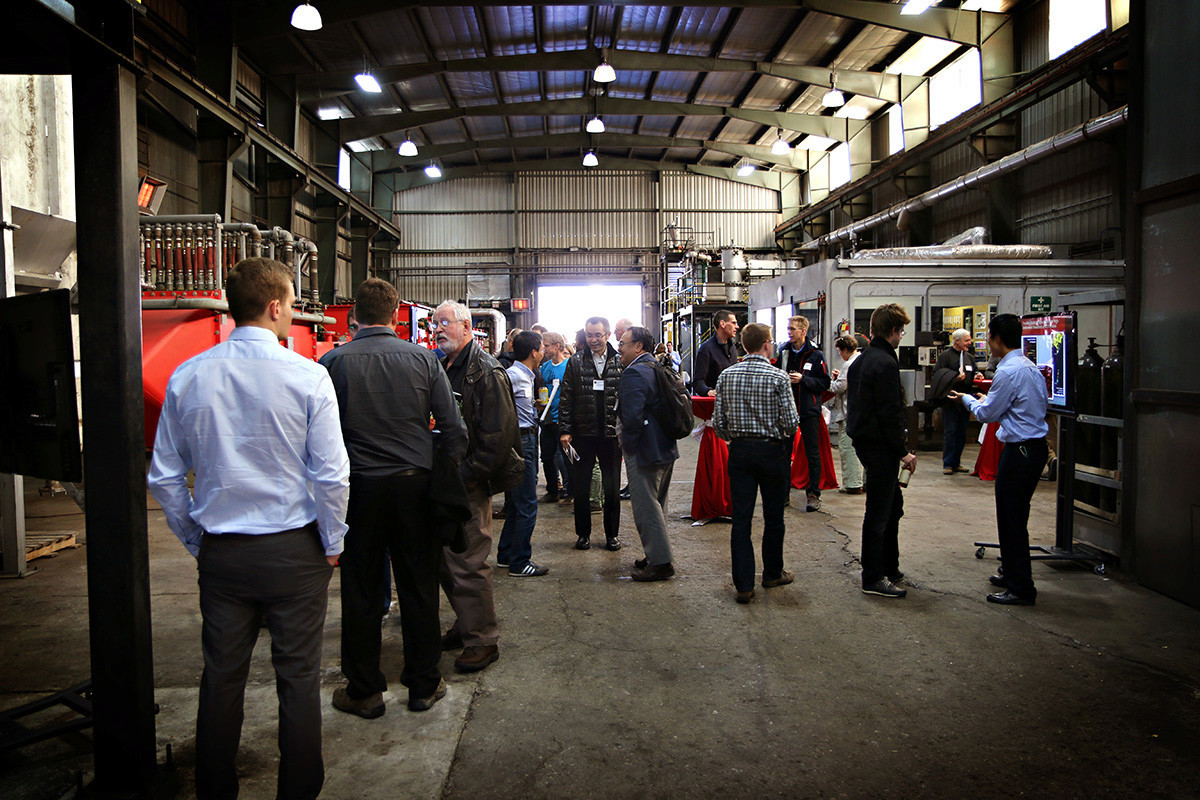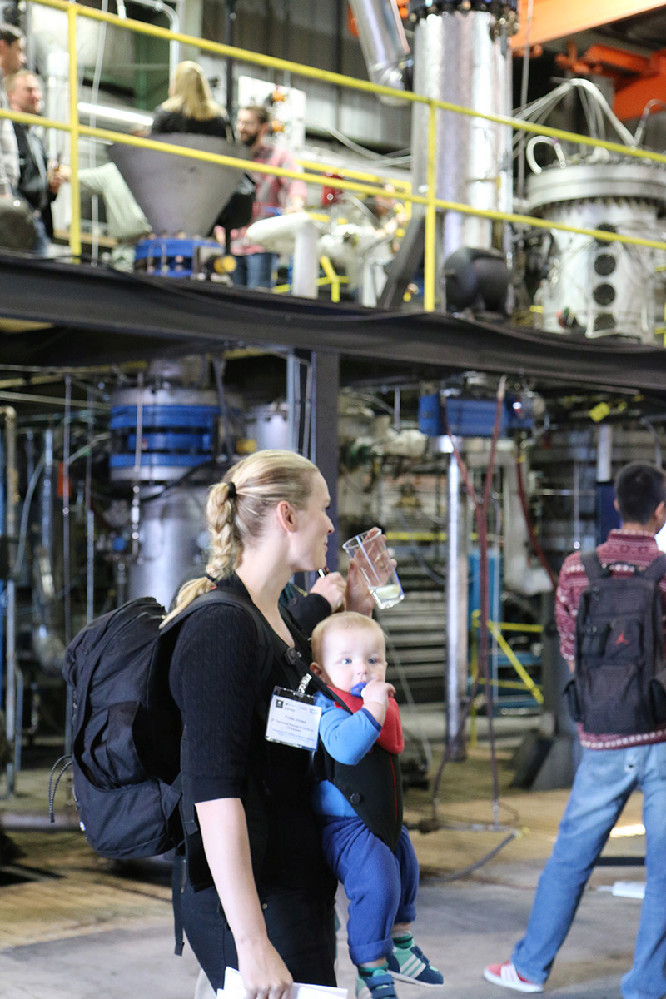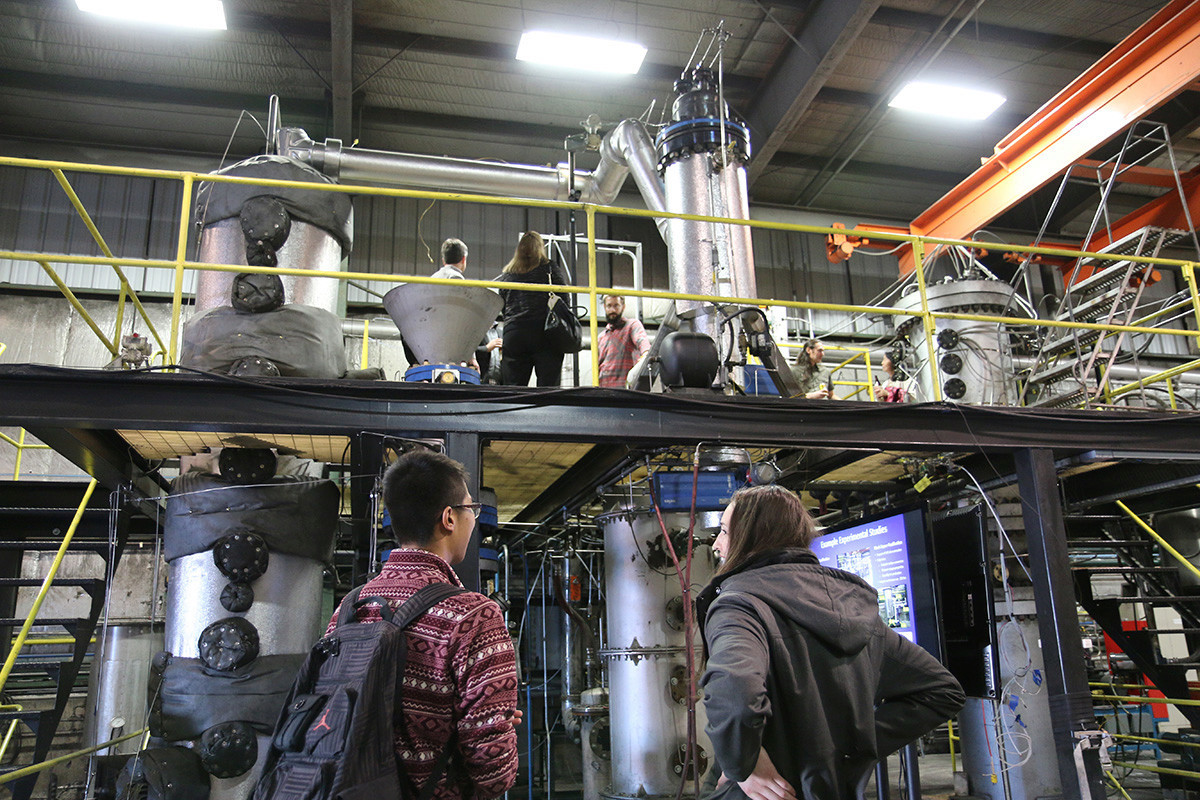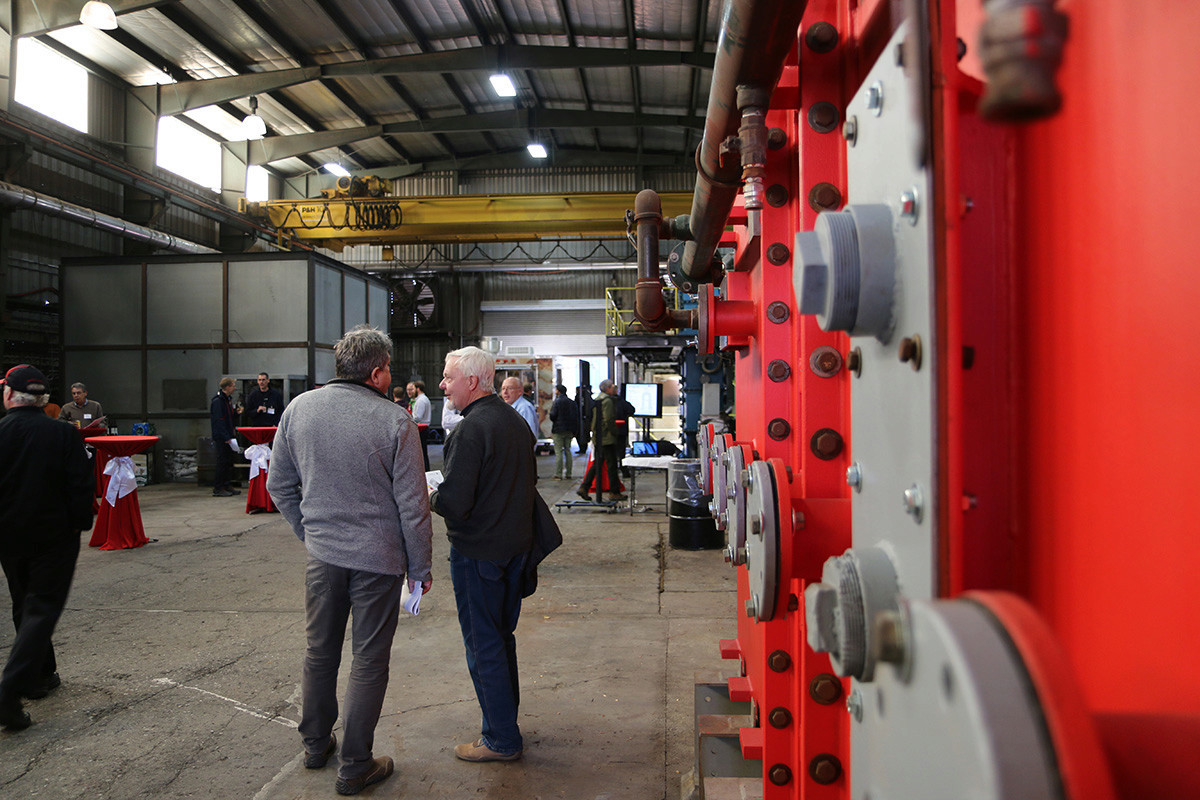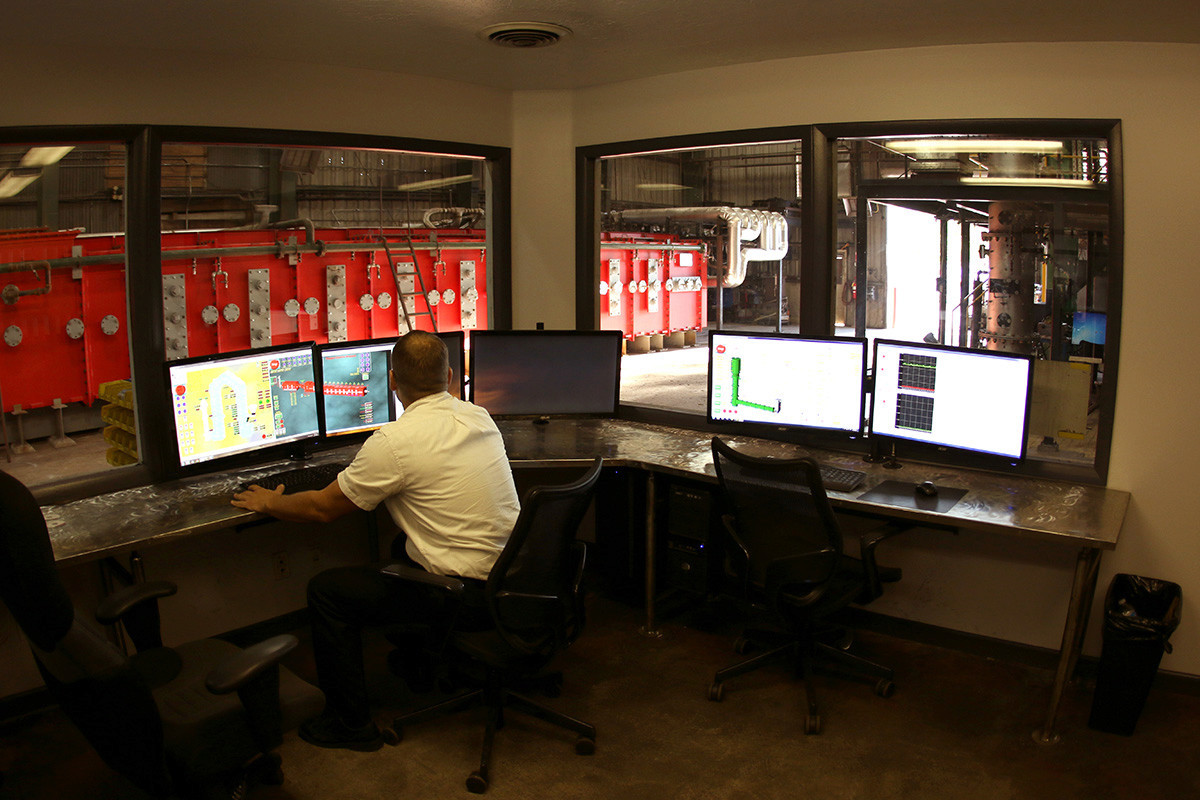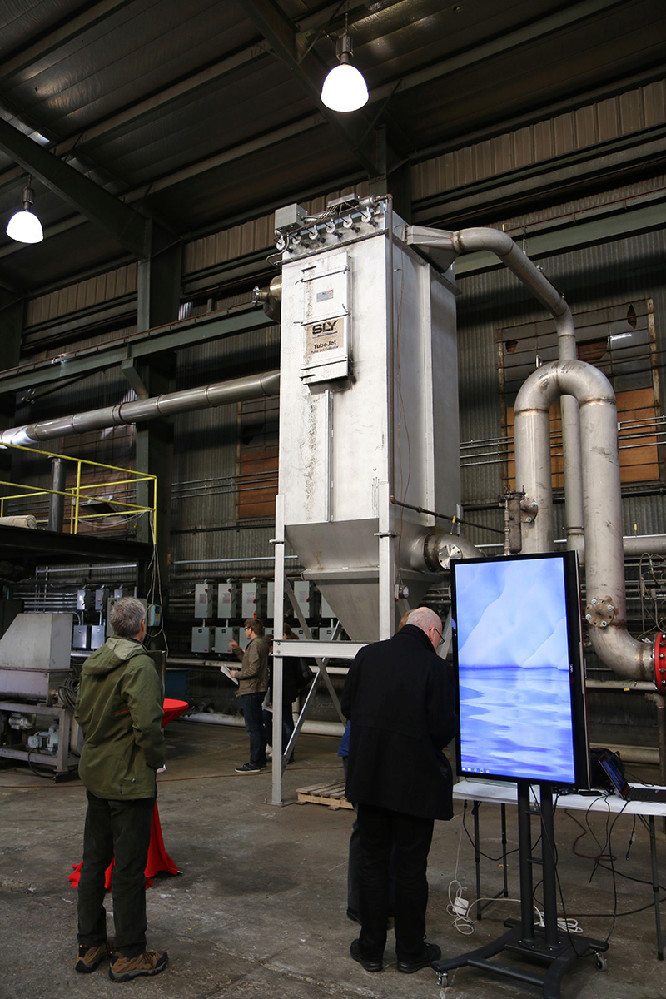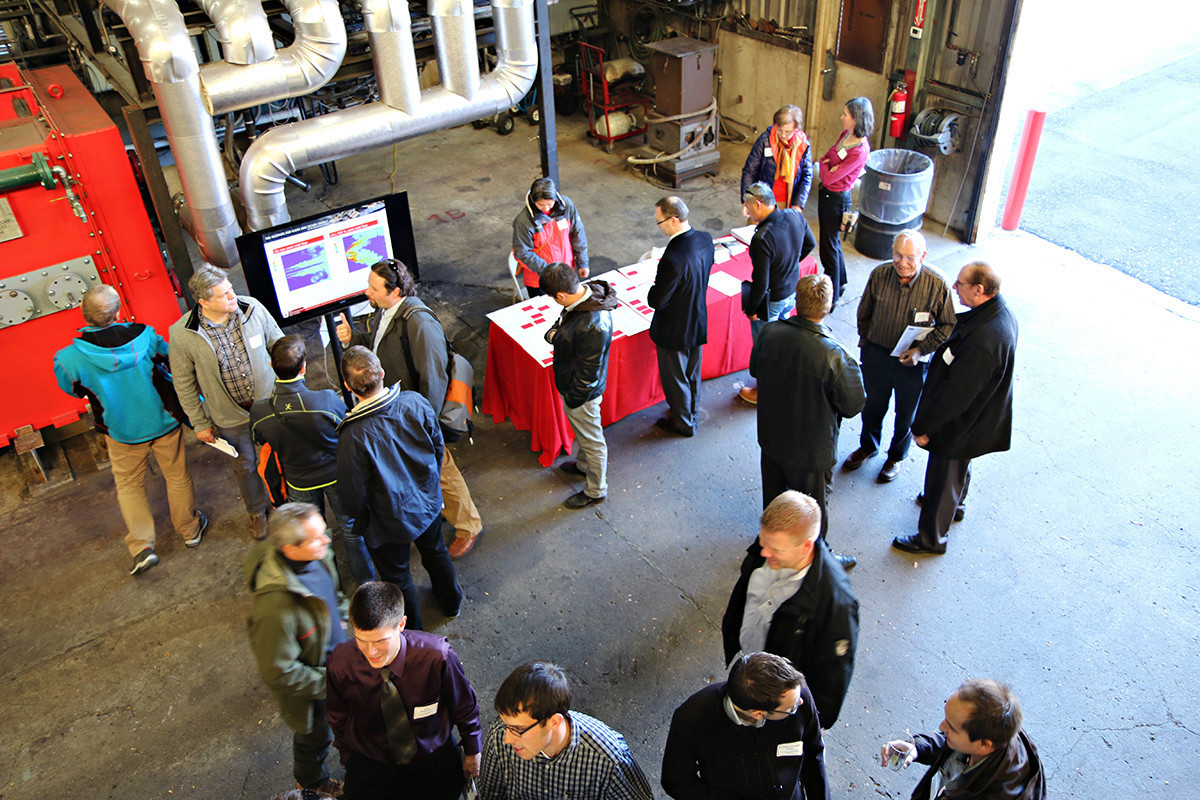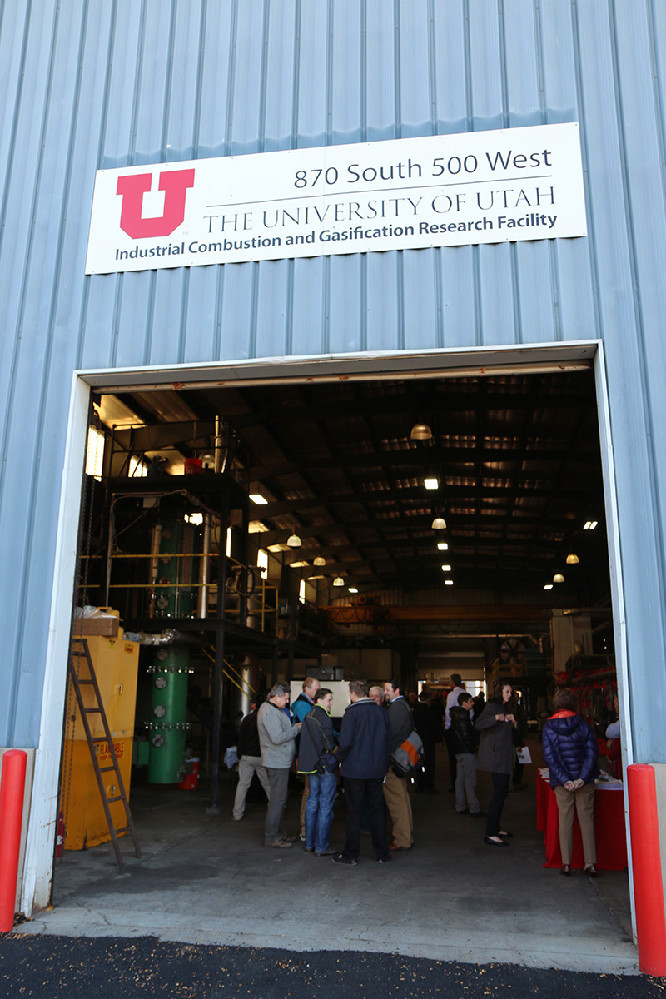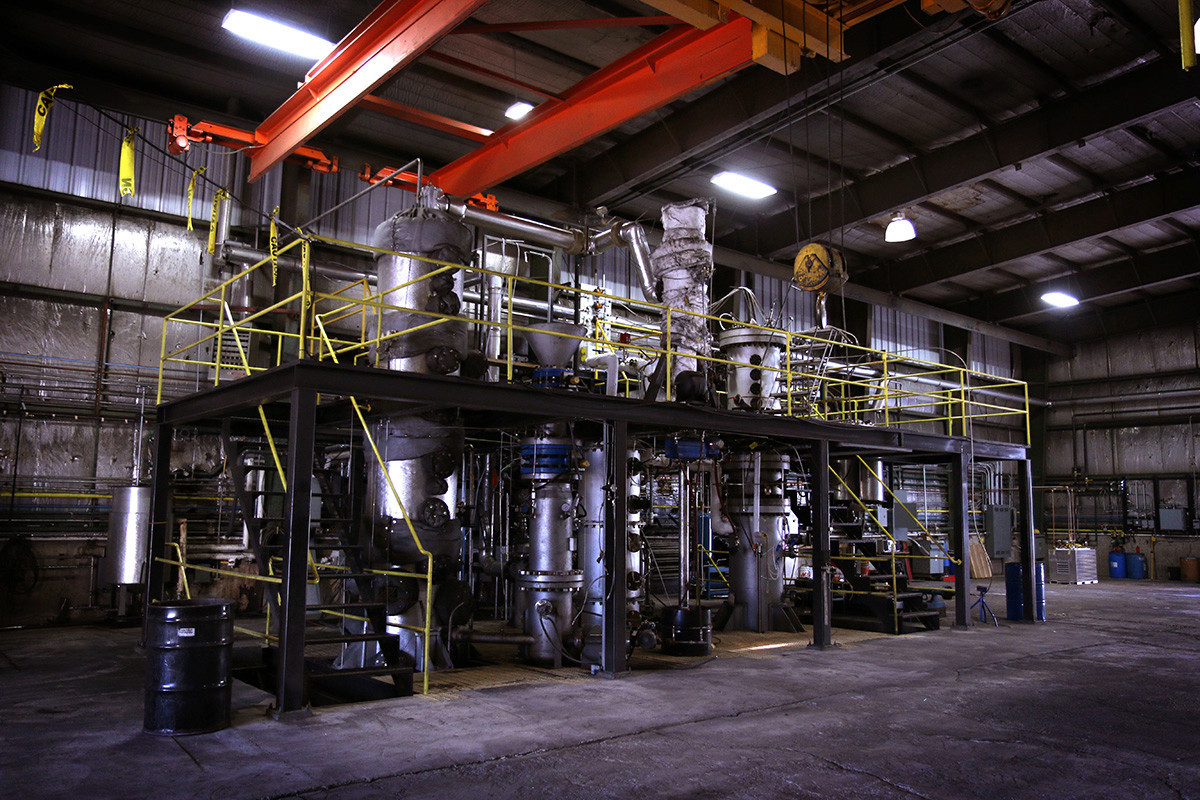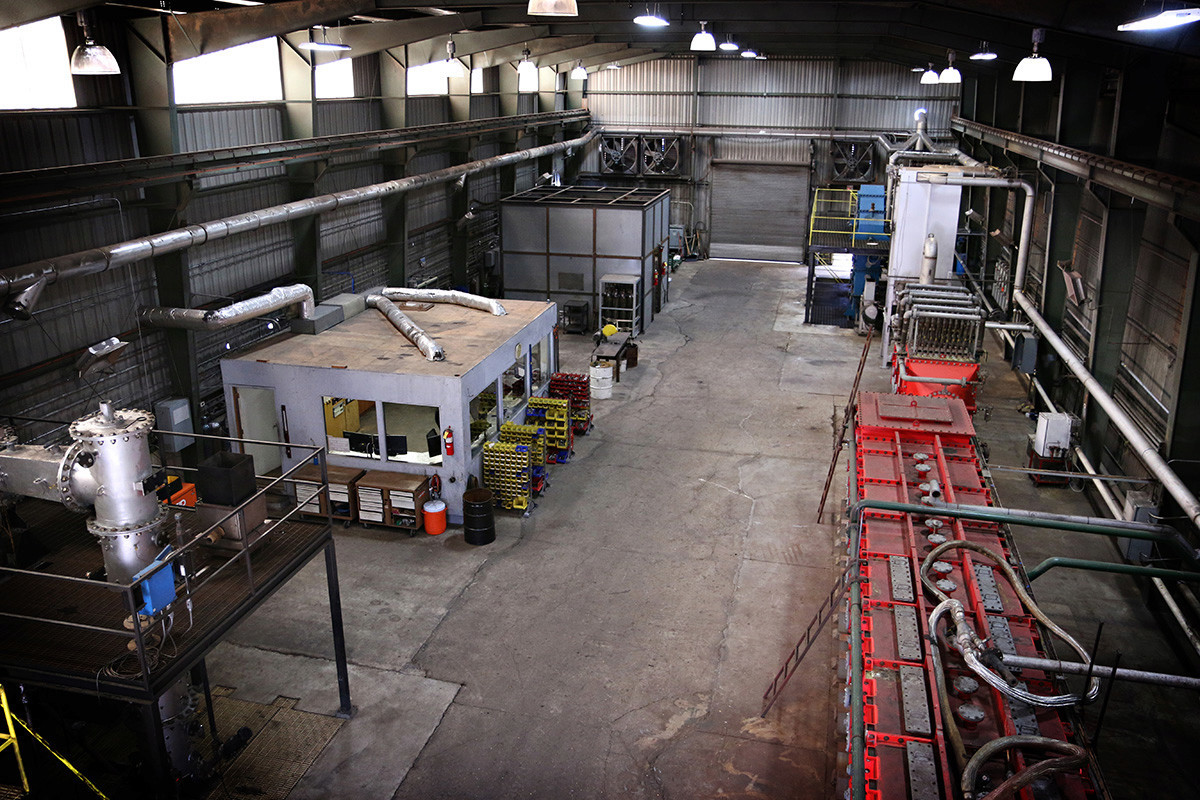Inside two particular warehouses in downtown Salt Lake City are more than just bundles of steel machines and pipes. They are the vision for a cleaner and more sustainable future.
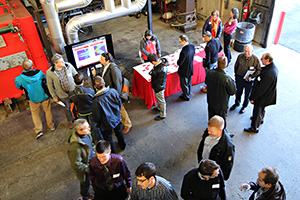
The University of Utah’s Industrial Combustion & Gasification Research Facility at 870 S. 500 West is a hub for state-of-the-art research in energy resources. On Tuesday, Oct. 28, the U’s chemical engineering department and the Institute for Clean and Secure Energy held its first open house for the facility, inviting industry professionals and researchers from around the world to take a peek inside and see what research can be conducted there. More than 120 people attended the event and took tours of the testing equipment. The open house was held in conjunction with the Impacts of Fuel Quality on Power Production conference held at Snowbird the same week.
“The question is how do we continue to use this major natural resource [such as coal] in the U.S. but also reduce our greenhouse gas emissions? We do a great deal of research here related to that,” said the facility’s director, Andrew Fry, who also is a research associate professor in chemical engineering at the U. “We just wanted to get information in front of them [industry professionals and researchers] to remind them we are here and let them know these are the kinds of things we do.”
Inside the two main warehouses (a third building contains administrative offices) are eight pilot-scale reactors for research, ranging from a 1.5-megawatt multi-fuel combustor that studies the formation of nitrogen oxide, to the newest machine — a chemical looping reactor where carbon dioxide is captured for storage. The lab was created in 1995 by U president David Pershing, who then was the dean of the College of Engineering and also is a chemical engineer.
“We have a unique facility in that we have more of these pilot-scale pieces of equipment in one place than any other place I can identify,” Fry said.
The facility also was upgraded this year with the latest hardware and software control systems, all donated by Temecula, Calif.-based Opto 22, which designs and manufactures systems for industrial automation applications.
“Energy is the key to our future as well as utilizing that energy effectively. I can’t think of too many things that are more important than that in today’s economy,” said Opto 22 chief executive officer and president, Mark Engman, who took a tour of the facility. “The idea that we can figure out how to burn coal cleanly, that’s a wonderful thing. It’s incredibly important.”
Brydger Van Otten, an engineer with Murray-based engineering consultants, Reaction Engineering International, has been inviting companies such as utilities and research-and-development firms to use the testing facility. She said the lab is packed with new and novel technologies.
“They [companies that use the facility] want to show their clients that their technology is going to work, and this is the first place that they can come to show that it will work in a larger scale,” she said.
The facility also has been beneficial for students, said Eric Eddings, U chemical engineering professor and associate dean for research for the College of Engineering.
“We need to train students to be able to work with this type of modern control equipment, so when they go to work in industry they are familiar with state-of-the-art technology,” he said. “That’s why our partnership with Opto 22 has been so good for our educational mission.”
